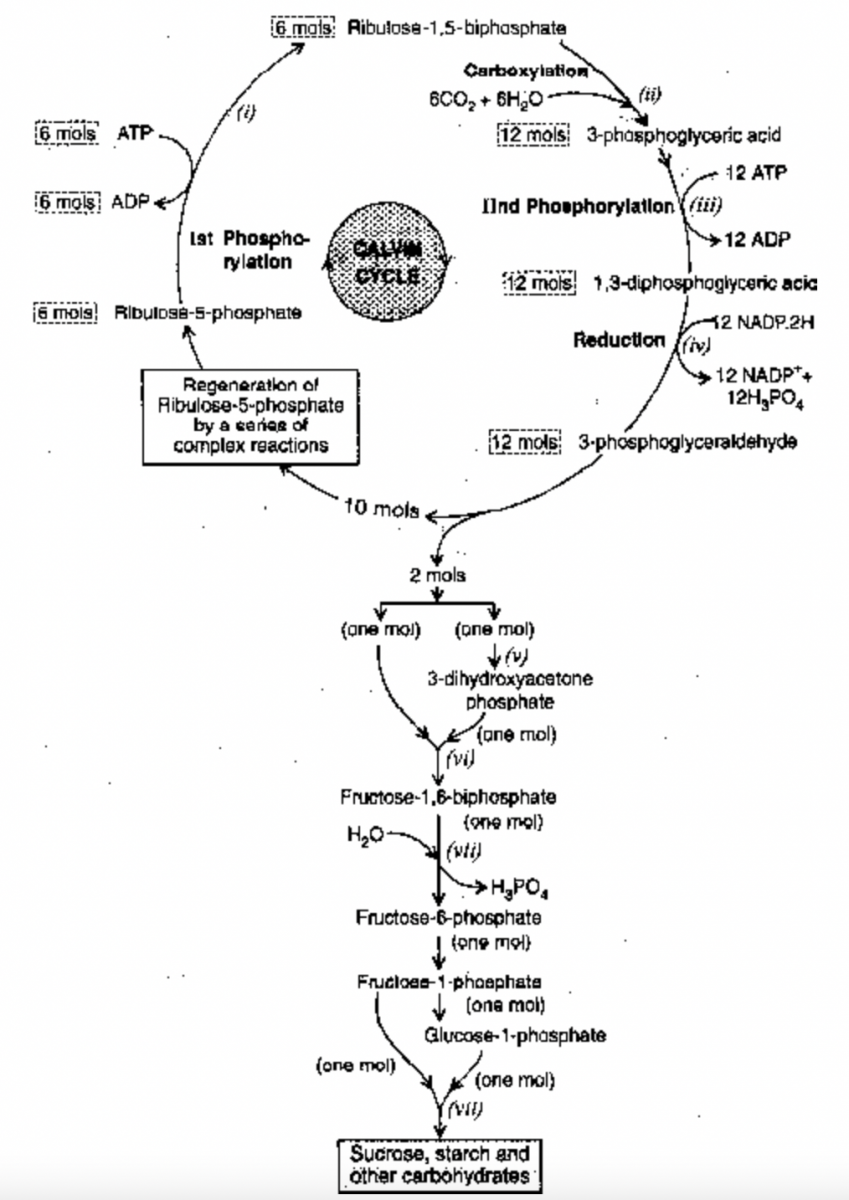
Calvin Cycle or C3 Cycle Or Reductive Pentose Pathway
Photosynthesis In Higher Plants of Class 11
calvin cycle steps
This path of C-assimilation was given by Calvin, Benson and Bassham (1949). They got the Nobel Prize for this work in the year 1961. This is also known as C 3 cycle because CO 2 reduction is cyclic process and first stable product in this cycle is a 3-C compound (i.e.,3-Phosphoglyceric acid or 3-PGA).

Fig. Calvin cycle (C 3 cycle)
In this cycle, CO 2 acceptor molecule is RuBP or RuDP (i.e., Ribulose 1, 5-biphosphate or Ribulose 1, 5-diphosphate).
As Calvin cycle takes in only one carbon (as CO 2 ) at a time, so it takes six turns of the cycle to produce a net gain of six carbons (i.e., hexose or glucose).
In this cycle, for formation of one mole of hexose sugar (Glucose), 18 ATP and 12 NADPH 2 are used.
The plants in which this pathway of CO 2 reduction occurs, are called C 3 plants.
Enzyme RUBISCO (RUBP carboxylase oxygenase) was also called earlier as carboxy dismutase.
RUBISCO is most abundant protein on earth and it is present on the outer surface of thylakoid membrane.




